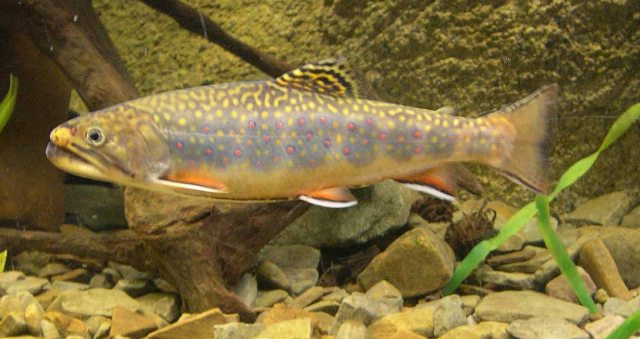Brook Trout
(Salvelinus fontinalis)

The brook trout found in Ohio are genetically distinct from brook trout found elsewhere. At one time the Ohio population had been reduced to two small streams. This prompted a reintroduction project to be conducted. At the end of the project 10 reproducing populations had been established in northeast Ohio.
Description
Brook trout have a typical trout-shaped body with an adipose fin between the dorsal and tail fin. One of its distinguishing characteristics is the white leading edge on the pectoral, pelvic, and anal fins. The rest of the fins are yellowish or reddish. Additionally, the back is heavily covered with vermiculation or 'wormy' marks. There are no black or brown spots on the head, back or caudal fin.
Habitat and Habits
The brook trout is the only trout native to the inland waters of Ohio. In the mid 1800's it was found in the northeastern portion of the state in the Chagrin River and in a small creek in Ashtabula County. It was thought that the native populations had all died out until 1972 when they were found in two small streams. These two populations were then proven to be native stock by genetic testing in 1993. Then in 1997 a reintroduction program was began which resulted in the establishment of 10 reproducing populations in northeast Ohio. Brook trout require very cold, clear water to become successfully established. In Ohio this habitat is only available in very small spring fed streams that are completely forested.
Reproduction and Care of the Young
Brook trout usually spawn between September and December. Females lay several thousand eggs in the gravel of cold water streams. After hatching, brook trout feed on insect larvae and other aquatic invertebrates. Brook trout become sexually mature at age one and generally do not live past age four.